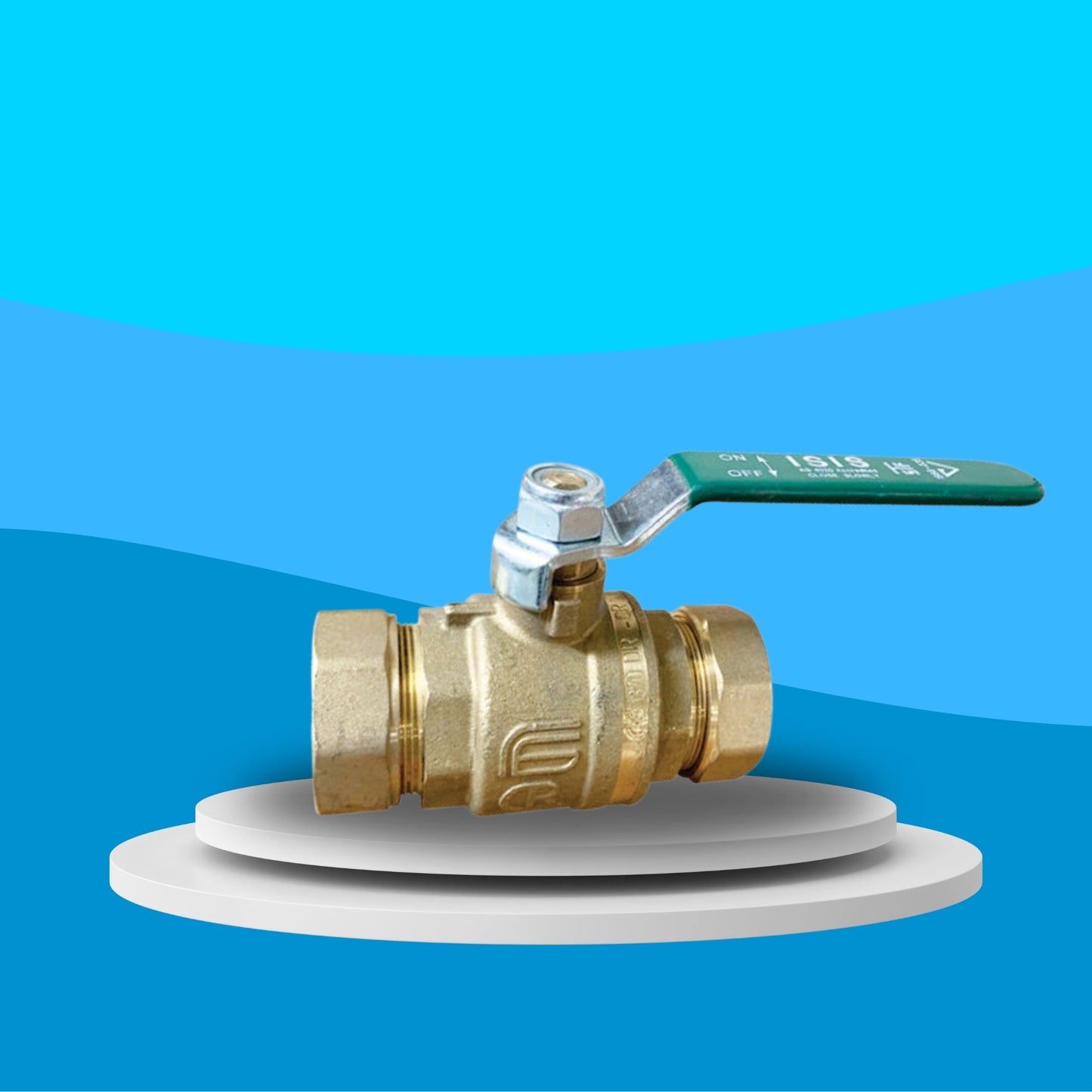Wras Valves
Wras Approved DZR Brass Ball Valve - Compression Ends (Green Lever Operated)
Wras Approved DZR Brass Ball Valve - Compression Ends (Green Lever Operated)
Couldn't load pickup availability
WRAS Approved | DZR Brass | Compression Ends | Full Bore | Green Lever Handle
The WRAS Approved DZR Brass Ball Valve with compression ends and green lever operation is a high-performance solution for use in potable water systems, heating applications, and general plumbing installations. Manufactured from DZR (Dezincification Resistant) brass, this valve offers enhanced corrosion resistance, especially in aggressive water conditions—making it ideal for hard water areas or systems exposed to fluctuating temperatures.
Designed for quick and easy installation, the compression ends require no soldering or threading, making them a reliable option for both professionals and DIY installers. The full bore design ensures minimal pressure loss and allows for maximum flow efficiency through the system.
The green lever handle provides a clear visual indicator of the valve's function and is easy to operate for instant shut-off or system isolation. Fully WRAS approved, this ball valve meets UK water regulations for use in drinking water systems, offering total peace of mind for compliance and safety.
WV - 2415
Share

FAQ's
What is the difference between a valve and an actuator?
What types of actuators are available?
The main types of actuators are:
Pneumatic actuators – use compressed air for fast, reliable operation.
Electric actuators – use electrical power for precise control.
Hydraulic actuators – use fluid pressure for high-torque applications.
Each type offers unique advantages depending on the environment, media, and system control needs.
How do I choose the right actuator for my valve?
To select the correct actuator, consider:
Valve type and torque requirement
Power source available (air, electric, or hydraulic)
Operating environment (temperature, humidity, hazardous area)
Control signal type (on/off or modulating)
Matching actuator torque and compatibility with the valve’s ISO mounting ensures reliable performance.
What are the main types of valves used in automation?
The most common valves in automated systems include:
Ball valves – for tight shutoff and quick operation.
Butterfly valves – for larger flow control with compact design.
Globe valves – for precise throttling and flow regulation.
Check valves – to prevent backflow.
Gate valves – for full bore flow isolation.
What’s the difference between a double-acting and spring-return actuator?
Double-acting actuators use air (or power) to both open and close the valve.
Spring-return actuators use air to open (or close) the valve, and a built-in spring to automatically return it to a safe position when power or air is lost — ideal for fail-safe operation.
How often should valves and actuators be serviced?
Regular maintenance intervals depend on operating conditions, but a good rule of thumb is to inspect every 6–12 months.
This includes checking for leaks, lubrication, seal wear, and actuator responsiveness to prevent unexpected downtime.

